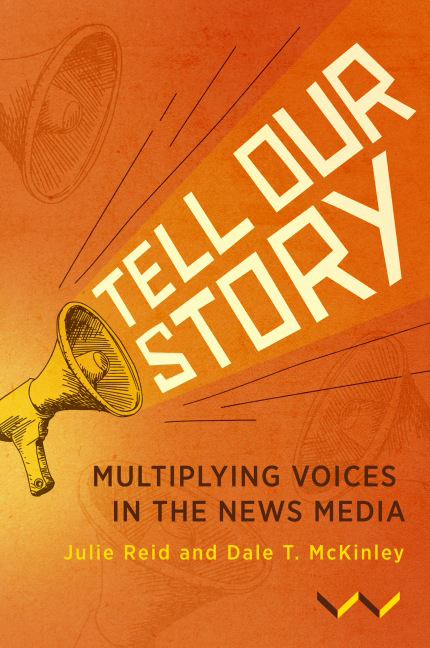Book contents
- Frontmatter
- Contents
- List of Figures
- Acknowledgements
- Abbreviations and Acronyms
- Chapter 1 The Importance of Voice and the Myth of the ‘Voiceless’
- PART 1 FROM THE INSIDE: VOICE(S) FROM THE GROUND
- Chapter 2 Community Perspective, Experience and Voice
- Chapter 3 Glebelands Hostel, Durban
- Chapter 4 Xolobeni, Eastern Cape
- Chapter 5 Thembelihle Community, Johannesburg
- PART 2 FROM THE OUTSIDE: DOMINANT VOICE
- Chapter 6 Dominant Media Telling and Elite Communication
- Chapter 7 The Political Economy of Dominant Power and Storytelling
- PART 3 NEW TRAJECTORIES FOR JOURNALISM AND VOICE(S)
- Chapter 8 Media Diversity and Voice(s)
- Chapter 9 Rethinking Media Freedom, Revamping Media Ethics
- Chapter 10 Planting the Seeds of Change
- Notes
- Bibliography
- Index
Chapter 5 - Thembelihle Community, Johannesburg
Published online by Cambridge University Press: 10 September 2020
- Frontmatter
- Contents
- List of Figures
- Acknowledgements
- Abbreviations and Acronyms
- Chapter 1 The Importance of Voice and the Myth of the ‘Voiceless’
- PART 1 FROM THE INSIDE: VOICE(S) FROM THE GROUND
- Chapter 2 Community Perspective, Experience and Voice
- Chapter 3 Glebelands Hostel, Durban
- Chapter 4 Xolobeni, Eastern Cape
- Chapter 5 Thembelihle Community, Johannesburg
- PART 2 FROM THE OUTSIDE: DOMINANT VOICE
- Chapter 6 Dominant Media Telling and Elite Communication
- Chapter 7 The Political Economy of Dominant Power and Storytelling
- PART 3 NEW TRAJECTORIES FOR JOURNALISM AND VOICE(S)
- Chapter 8 Media Diversity and Voice(s)
- Chapter 9 Rethinking Media Freedom, Revamping Media Ethics
- Chapter 10 Planting the Seeds of Change
- Notes
- Bibliography
- Index
Summary
In many ways, Thembelihle is an urban microcosm of the South African transition. As the shackles of the apartheid urban planning and influx control systems began to unravel in the early to mid-1980s, a small settlement ‘was established on municipal-owned land’ that was situated southwest of Johannesburg, adjacent to the predominantly Indian suburb of Lenasia. Its first residents were a combination of urban and rural migrants, alongside the ‘employees of a brick manufacturing company’ (SERI 2013) operating in the area.
It was soon given the name Thembelihle, which literally translated means a ‘place of hope’. And, indeed, it was just that for the majority of its early residents who arrived for one or more very specific reasons: to look for work in the Johannesburg metropolis; to be closer to jobs and other amenities associated with the neighbouring Lenasia community; and/or to move away from parents and family to establish their own homes and families.
Although these initial ‘residents were granted permission to reside at the settlement by the [apartheid] government and were given materials to construct informal dwellings’ (SERI 2013), it remained classified as a ‘squatter settlement’. This meant that despite its rapid growth throughout the late 1980s and early 1990s, basic services were not provided and little or no socio-economic development was undertaken by the apartheid authorities. By the time of the democratic elections in 1994, the residents of Thembelihle had managed to not only survive the brutalities of the apartheid system but also to make the area their permanent home. People lived in their own mostly self-built dwellings, however modest; children went to local schools; and most of those who had jobs worked nearby. In other words, Thembelihle had put down roots; it had become a real community.
Once the new democratic government was in place, the community fully and rightfully expected it to finally begin the process of providing basic services and faclitating other infrastructural and economic development in the area. However, very little of this was forthcoming, and in 1998 residents were told by local and provincial government that the entire community needed to be moved to a new area (Vlakfontein, several kilometres to the south) because Thembelihle was situated on dolomite and was therefore unsafe for residential upgrading or further development (McKinley 2002; Segodi 2018).
- Type
- Chapter
- Information
- Tell Our StoryMultiplying Voices in the News Media, pp. 79 - 100Publisher: Wits University PressPrint publication year: 2020



